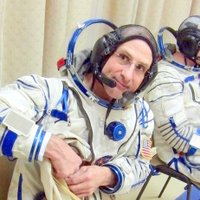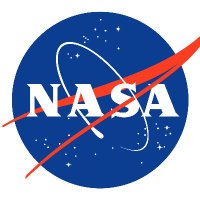
Don Pettit
@astro_pettit
NASA Astronaut and astrophotographer.
Engineer by schooling, scientist by profession, explorer by heart.
ID: 310804819
https://www.nasa.gov/people/donald-r-pettit/ 04-06-2011 11:23:32
615 Tweet
43,43K Followers
283 Following

Reflecting on reflections: working in the International Space Station Cupola setting up for a night pass of imagery while using a flashlight. I captured this moment as a self portrait. Nikon D3s, 8mm fisheye, f2.8, 1/10th sec, ISO 1600, Expedition 30, 2012



Sao Paulo, Brazil at night, showing a patchwork of mercury VS sodium vapor lighting visible from International Space Station. Older mercury vapor lighting is seen as blueish-green in the older, center part of town while yellow sodium vapor lighting appears in the newer surrounding regions.


Yo-yo in space! Microgravity makes inventing new tricks easy, and when you invent them, you get to name them! I'll be bringing a new set of yo-yos on my next mission to International Space Station this September.


Chicago at night from International Space Station; showing its distinct grid pattern and Lake Michigan shoreline. Nikon D3s, 85mm, f1.4, 1/125th sec, ISO 6400, Expedition 31, 2012.




Star trail from International Space Station, with ghostly blue outline of a solar panel. Multiple atmospheric layers are visible due to solar driven excitation of atomic oxygen (green) and hydroxyl (-OH) radicals (orange-pink). The star trails become curved near the horizon due to the


Yo-Yo Ma recording of Bach Cello Suite No. 1 driving a water-bubble sphere on International Space Station. See previous posts for details on this water-speaker setup. Expedition 31, 2012.

An X Space... from space?! @DominickMatthew joins us from the International Space Station to talk with @Astro_Pettit about astrophotography in low Earth orbit. We're taking your questions—join us Wednesday, July 24 at 4:05pm ET! x.com/i/spaces/1mrGm…

Star field image of the Southern Cross from International Space Station during Expedition 6 in 2003 showing the atmosphere on edge illuminated by green airglow from atomic oxygen. At this time Space Station’s orbital attitude was a solar inertial attitude (XPOP) that allowed the solar


Amazing edge-view of a sprite from International Space Station by astronaut Matthew Dominick. This excerpt shows a sprite captured at the horizon edge during a nighttime pass over southeast Asia. This sprite reaches approximately 60 kilometer altitudes, which is in the accepted range of 35-90
















